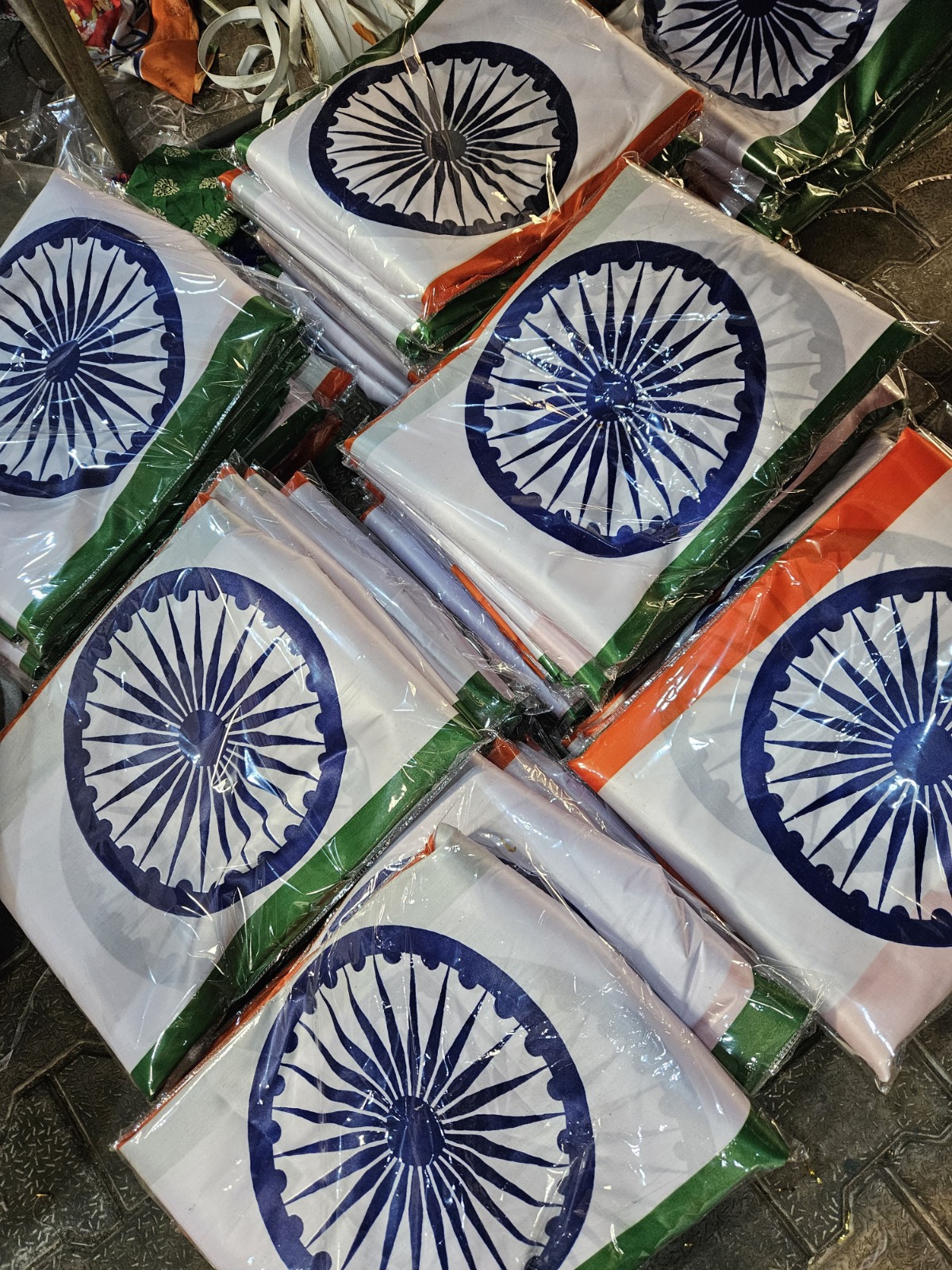The Indian Flag: A Symbol of Unity and Freedom
The Indian national flag, fondly known as the Tiranga, is more than just a piece of fabric. It is a powerful symbol that represents the country’s rich history, diverse culture, and the relentless struggle for freedom. The Tiranga is revered by every Indian and holds a special place in the hearts of millions. Its presence is felt everywhere, from the bustling cities to the tranquil villages, and especially during the national festivals when the whole nation celebrates with the mantra of “har ghar Tiranga”.
The History of the Tiranga
The journey of the Indian national flag is a tale of evolution, reflecting the country’s fight for independence and the aspirations of its people. The first version of the flag, which can be considered an ancestor of the current Tiranga, was hoisted on 7th August 1906 in the Parsee Bagan Square in Kolkata. This flag featured horizontal stripes of red, yellow, and green.
In 1921, Pingali Venkayya, a freedom fighter and an avid supporter of Mahatma Gandhi, proposed a flag with two colours – red and green – representing the two major communities in India. Gandhi suggested adding a white stripe to represent peace and the rest of the communities in the country. This tricolour design laid the foundation for the present-day Tiranga.
Finally, on 22nd July 1947, the Constituent Assembly adopted the current design of the Indian national flag. The Tiranga consists of three horizontal stripes of saffron, white, and green, with the Ashoka Chakra, a 24-spoke wheel, in navy blue at the centre of the white stripe.
The Symbolism of the Tiranga
Every element of the Tiranga holds deep significance. The saffron colour at the top symbolizes courage and sacrifice, reminding us of the countless sacrifices made by freedom fighters. The white stripe in the middle represents peace and truth, reflecting the country’s commitment to justice and harmony. The green colour at the bottom stands for faith and chivalry, symbolizing the fertile land of India and its agricultural heritage.
The Ashoka Chakra, with its 24 spokes, is inspired by the lion capital of Ashoka and symbolizes the eternal wheel of law. It represents motion, progress, and the importance of justice. This wheel is a constant reminder of the continuous progress and dynamism that India strives for.
The Tiranga and National Pride
The Indian national flag is not just a symbol of the nation’s identity but also a beacon of pride for every Indian. The sight of the Tiranga fluttering high evokes a sense of patriotism and unity. It is a common sight during national festivals such as Independence Day and Republic Day when citizens participate in the “har ghar Tiranga” campaign, adorning their homes with the flag.
The “har ghar Tiranga” initiative has gained immense popularity over the years. It encourages every household to hoist the national flag, promoting a sense of collective pride and belonging. This movement has strengthened the bond among citizens, reminding them of the shared heritage and the values that the Tiranga represents.
The Tiranga in Modern India
In contemporary India, the Tiranga continues to inspire and unite the nation. It is a symbol of resilience and determination, reflecting the country’s journey from colonial rule to a vibrant democracy. The flag is hoisted at government buildings, schools, and various institutions, serving as a constant reminder of the country’s rich history and the responsibilities that come with freedom.
The Tiranga also plays a crucial role in India’s diplomatic relations. It is a prominent feature during international events, showcasing the nation’s identity on the global stage. Whether it’s at the United Nations or during bilateral meetings, the presence of the Indian national flag signifies India’s commitment to peace, progress, and mutual respect.
Respecting the Tiranga
The Tiranga is treated with utmost respect and honour. The Flag Code of India, which was amended in 2002, provides detailed guidelines on the correct usage and display of the national flag. It emphasizes that the flag should be displayed in a position of honour, distinct and higher than any other flag.
According to the Flag Code, the Tiranga should not be used for commercial purposes or as drapery. It should never touch the ground or be flown upside down, except as a signal of distress. The code also specifies the dimensions and proportions of the flag to ensure uniformity and respect for its sanctity.
Celebrating with the Tiranga
National festivals are incomplete without the Tiranga. On Independence Day, 15th August, and Republic Day, 26th January, the entire nation comes alive with celebrations. The “har ghar Tiranga” campaign sees millions of flags being hoisted, creating a sea of saffron, white, and green across the country. Schools, colleges, and various institutions organize flag hoisting ceremonies, parades, and cultural programs to honour the national flag and the values it represents.
During these celebrations, the national anthem, “Jana Gana Mana,” is sung with fervour, and the Tiranga is saluted with pride. The President of India hoists the flag at the Red Fort in Delhi on Independence Day, followed by a grand parade showcasing India’s cultural diversity and military strength.
Tiranga and the Future
As India continues to progress, the Tiranga remains a source of inspiration and hope. It reminds the nation of its glorious past, the sacrifices of its people, and the promise of a brighter future. The “har ghar Tiranga” campaign, which has become an integral part of national celebrations, reflects the country’s collective spirit and determination to uphold the values of freedom, equality, and justice.
In the coming years, as India faces new challenges and opportunities, the Tiranga will continue to be a guiding light. It will remind the nation to stay united, cherish its diversity, and strive for progress and prosperity. The Indian national flag, with its timeless symbolism and profound significance, will always be a cherished emblem of the country’s identity and pride.




